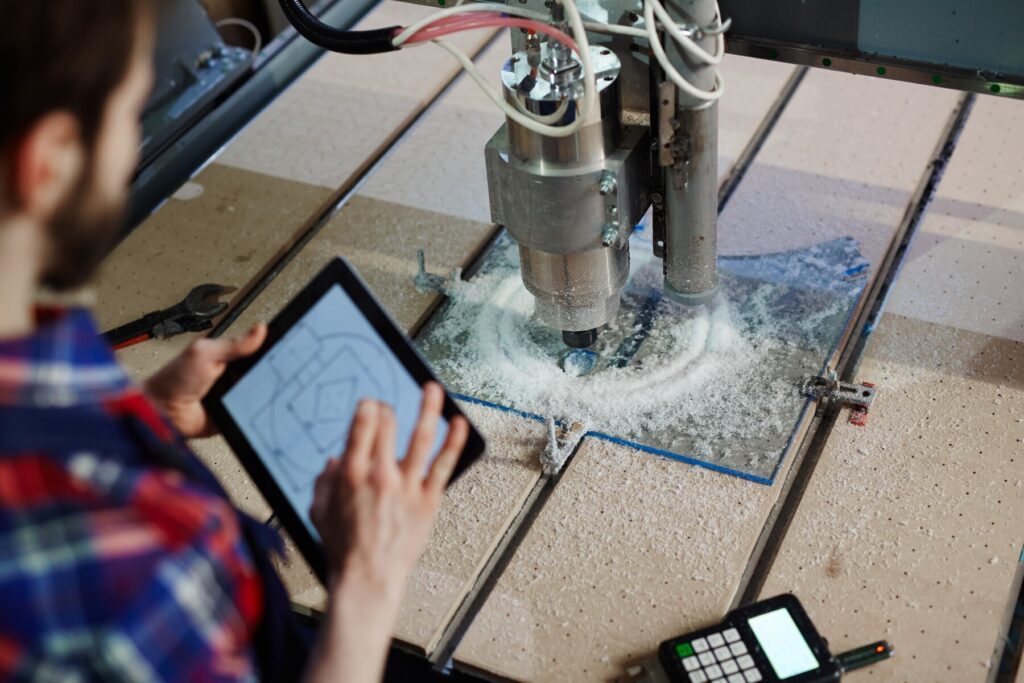CNC (Computer Numerical Control) machining has become an essential manufacturing process for creating precise parts across various industries, from aerospace to medical equipment. However, the cost of CNC machining can vary significantly depending on factors like material choice and design complexity. Understanding these factors is crucial for businesses seeking cost-effective solutions without compromising quality. This article explores how CNC machining costs are influenced by material and complexity, helping you make informed decisions about your next manufacturing project.
Understanding CNC Machining and Cost Structure
CNC machining is a manufacturing process where pre-programmed computer software controls machinery to produce high-precision parts. This process is highly valued for its accuracy and repeatability, but its cost structure can be complex, involving material costs, machine operation, labor, and other overheads. For companies or individuals investing in CNC machining, understanding the factors influencing costs is essential to optimizing budgets and project timelines.
The primary costs in CNC machining are often divided into material costs and machining time. Material choice significantly impacts the total expenditure since different materials have unique properties that affect both the price per unit and the time it takes to machine. For example, harder metals like titanium are more expensive and require specialized tooling, which increases both material and operational costs. By analyzing how each component of CNC machining influences pricing, you can identify the factors that offer opportunities for cost savings.
Impact of Material Choice on CNC Machining Costs
Material choice is one of the most critical factors in CNC machining costs, as each material has a unique set of properties that influence machinability and wear on tools. Metals like aluminum, steel, and titanium are commonly used in CNC machining, and their prices differ widely. Aluminum, for example, is relatively inexpensive and easy to machine, which keeps the costs lower. In contrast, titanium is more costly and challenging to work with, demanding specific tools and expertise, which increases both material and labor costs.
Plastics, ceramics, and composites are other material options in CNC machining, each with unique cost considerations. While plastics tend to be cheaper, they may not be suitable for applications requiring high strength or heat resistance. Ceramics and composites, though beneficial for specialized applications, can be quite costly due to their fragility and difficulty in machining. Selecting the right material for a project requires balancing performance requirements with budget constraints to achieve the best value without sacrificing quality or durability.
Influence of Design Complexity on CNC Machining Costs
Design complexity also plays a significant role in determining CNC machining costs. Simple designs with fewer details and straight cuts require less time and fewer tool changes, making them more affordable to produce. However, complex designs with intricate shapes, tight tolerances, and multiple angles require advanced machining techniques and more time, leading to higher costs. For example, a part with deep cavities, fine details, or complex curves will take longer to machine, and each additional step adds to the operational cost.
Moreover, intricate designs often necessitate specialized tooling and custom fixtures, further increasing costs. Custom tooling not only adds an initial investment but also leads to more frequent tool wear and replacement, contributing to long-term expenses. Therefore, simplifying designs where possible or making adjustments that ease machining can significantly reduce costs without compromising the functionality or quality of the final product.
The Role of Machining Time and Tooling in Cost Variations
The amount of time required to machine a part directly influences CNC machining costs, as extended machining times translate into higher labor and operational expenses. Materials that are more challenging to machine, such as stainless steel or carbon fiber, require slower speeds and increased precision, which prolongs the machining process. Conversely, softer materials like aluminum or certain plastics can be processed quickly, reducing labor time and lowering costs.
Tooling also plays a substantial role in the overall cost. Tools wear out over time, especially when machining harder materials, and need to be replaced or sharpened regularly. The need for specialized tooling, such as diamond-tipped or carbide tools, further raises the costs for projects involving tough materials or intricate details. By carefully selecting materials and designing parts with tooling limitations in mind, companies can optimize machining time and reduce unnecessary expenditures on tool maintenance or replacement.
Optimizing CNC Machining Costs Through Strategic Choices
To control CNC machining costs, it’s essential to make strategic choices concerning material selection, design complexity, and machining parameters. By choosing readily machinable materials that meet performance requirements, businesses can lower expenses on material and machining time. Aluminum, for instance, offers a good balance of machinability and durability, making it a popular choice for cost-conscious projects.
Additionally, working with experienced CNC machining partners can yield valuable insights into design adjustments that simplify production without sacrificing functionality. Many companies also use cost-estimation software and simulations to optimize machining paths, minimize material waste, and improve cycle times. These tools, combined with thoughtful material and design decisions, can make CNC machining a cost-effective solution for projects across various industries.
Understanding the factors that impact CNC machining costs is essential for managing budgets and ensuring project success. Material choice, design complexity, machining time, and tooling are all key drivers of cost, each offering opportunities for savings through strategic planning. By carefully considering these factors and working with knowledgeable machining partners, businesses can optimize their manufacturing processes and achieve high-quality results within budget.












